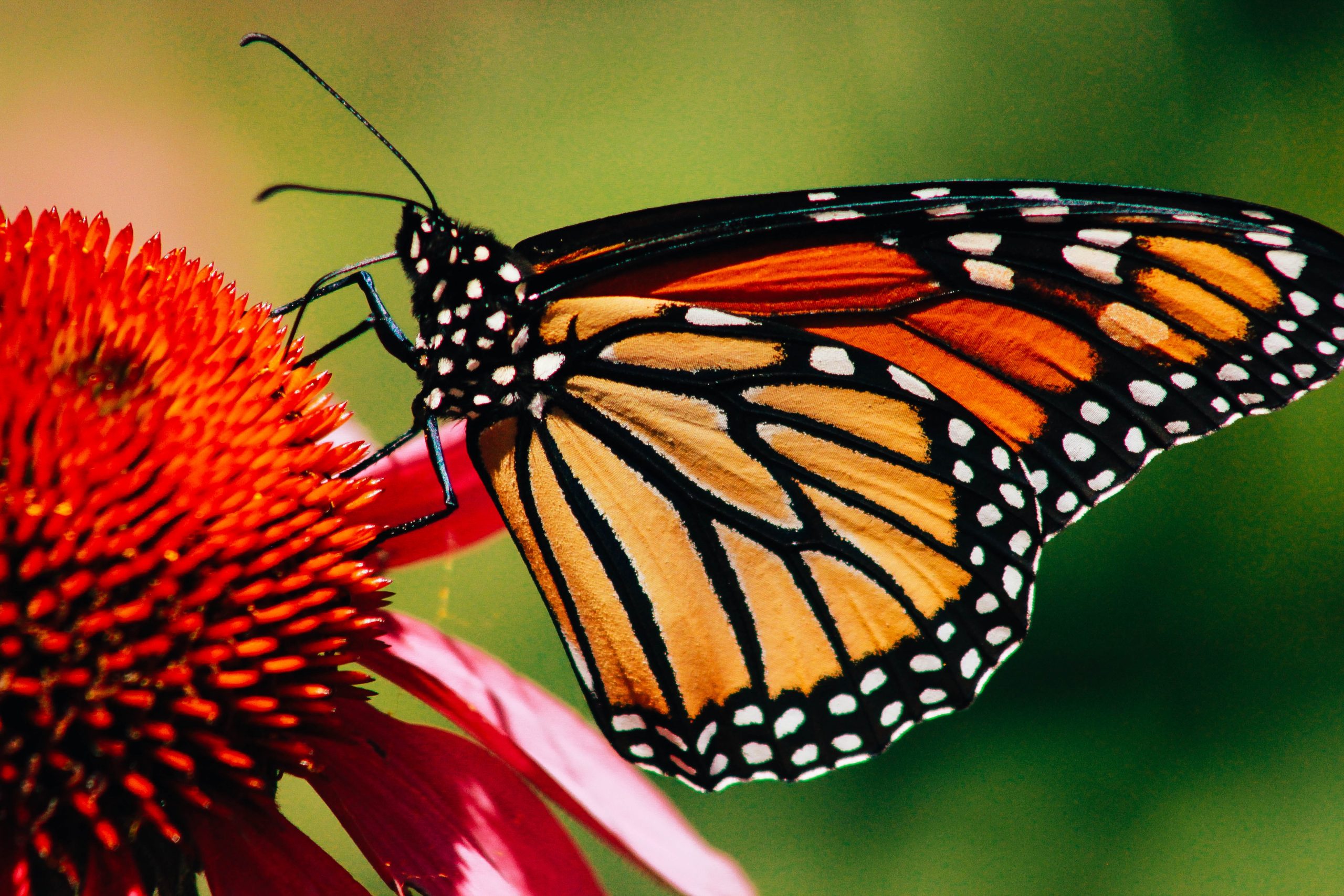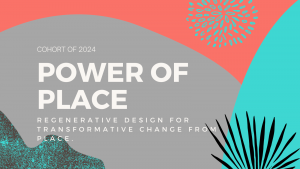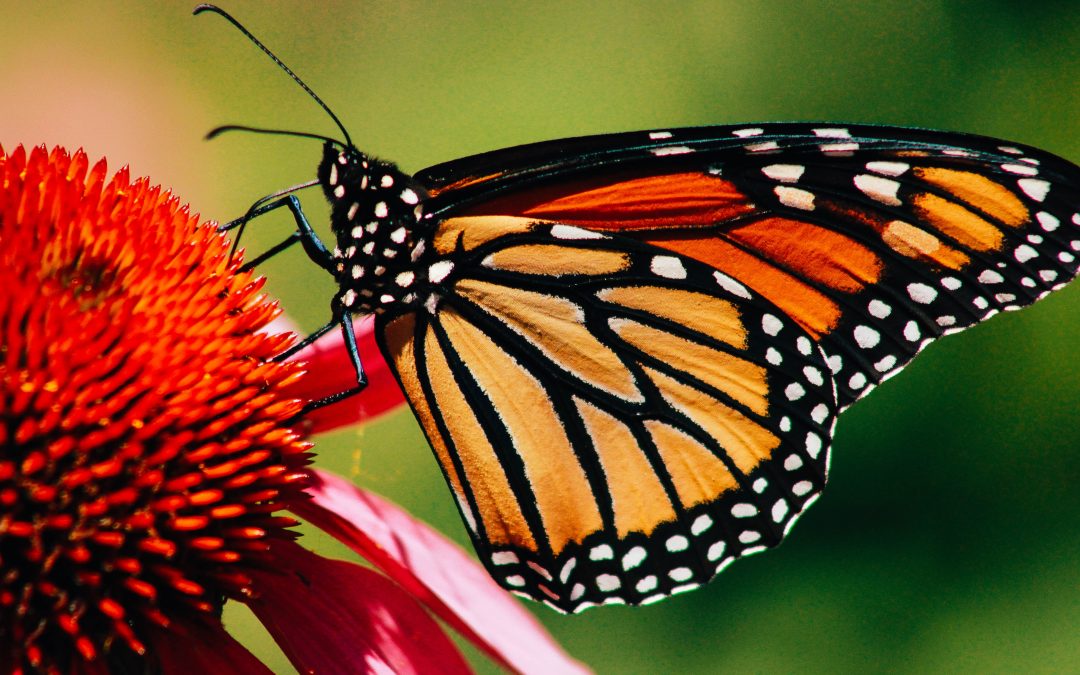
I like on these meanders to reflect on patterns or questions that consistently arise in Power of Place or in our work with clients about regenerative work. And one of the more common ones is what is really regenerative? And that has been our constant question and quest as we have been developing ourselves. It’s why we called our organisation Really Regenerative because we are still asking – is this way of working really regenerative? What does it mean to be really regenerative? How do we know when something is really regenerative and when it isn’t?
Because the wave of interest in regeneration is growing exponentially all the time and there are constantly new people coming into the field, and generally no-one has really sought to say this is the definitive version of what it is to be regenerative – because we are all evolving towards it and also simultaneously remembering our innate heritage as living beings to be regenerative – it’s a really big question to think about. In a way finding that answer is our life’s work – what does it take to realign ourselves to the impulses that have created the conditions conducive to life for 38 billion years – is among the questions we are all living.
I am still finding my way into my own answers. It took a lot of exploration until I felt even remotely close to being able to say – well this for me is what is at the heart of what is regenerative. I had to test things out, experiment with them, develop cognitive understanding but also learn how to really feel into some things in a much more embodied sensory way – and that continues to be very hard for me. And I think for many of us – especially those of use deeply raised in the culture that prizes knowledge, knowing and cognitive intellect.
But over time I have found some premises, frameworks, processes that I think are pretty strong contenders to say – yes this is really regenerative. This is how life works. And largely those things have come out of four inter-related fields. The first biology – biologists study life, the biology of life and how it works, closesly related are ecologists, zoologists maybe. Janine Benyus and The Biomimicry Institute’s codification of life’s principles was probably the first thing that lifted my eyebrows in an aha moment. Aha – that’s how we would design good chemistry in the built environment. Aha – that’s how we would design trains or swimsuits, or the surface of hospital equipment so that it didn’t attract bacteria. And then when the Institute first stepped towards biomimicry for social innovation – looking at those principles in the context of human culture – that felt really interesting, as did developmental biology. But it was the developmental psychology fields and the field of quantum physics that started to fuse it together for me. With more than a dash of indigenous wisdom and practice that seemed to understand the whole thing without any ology sourced angst at all.
But in terms of looking at those principles and interpreting and applying them to human economy and human culture to realign those to living systems, whilst also restoring the living systems we have impacted to a regenerative state – Carol Sanford’s expression of the 7 core principles are the ones which landed most strongly for me. So perhaps my understanding and approach is a fusion of all those ologies – biology, psychology anthropology, and quantum science.
But some of these things are really slippery when you start to try to work with them in the world that is whilst trying to birth something new – effectively what we’re all really engaging in.
One of the most slippery you might have encountered is Wholeness. Living systems are whole not fragmented, comparmentalised, reduced, not parts, but wholes. Hmmm. Wholeness. Wholes not parts. But some parts are also wholes in themselves. A community can be a whole. And in that community there are hundreds of individual people, who are wholes. It’s very difficult to talk about systems without talking about parts and wholes but the very doing so puts us into a mechanistic mindset and sets up images of cogs and wheels and the movements of the parts making the whole alive, whereas in a living system the complex dynamism of interrelationships is always shifting and moving and more complex than 1-2-1 linearity.
What does it mean to be whole?
What does it mean to be whole? I’m a whole living being but am I really whole? Well, I regenerate therefore I am. So my cells are regenerating all the time, but as I age, less effectively. Am I less whole if my respiratory system isn’t working that well? Well, yes – a part of my might not be working so well but I’m still whole. I’m still me. If I lose a limb am I still whole? Yes, of course I am because I am still me. Who I am, the essence of me is still there. It’s one of the things about disability that makes me so mad because it completely ignores the wholeness of the essence of a human being to reduce them to being someone who is disabled. So wholeness then is something beyond mere functionality. If my heart stops am I still whole? Possibly but technically I’m dead so I’m no longer a whole living system though I’m still of interest for living systems of bacteria.
So there’s something about wholeness in which some parts of the whole are more nodal than others but they’re never entirely standalone. So then there’s something about wholeness that keeps you alive. There’s some quality that is about aliveness. Vitality. Viability. Wholeness is Soulness. Is-ness. Essence.
So what is it then if we think about other places, other living systems? Is one forest whole and another not? Is a forest the right scale of entity to be looking at as a living system – given that we’ve replanted most of them and shrunk the rest to make way for agriculture. How do you think about that at the scale of a city or even a small village? Why does it add value to even think about wholeness in the context of an economy or culture?
There’s also something about the soulness and aliveness of wholeness that just simply is. There’s something about encountering that sense of aliveness that commands respect and recognition for the unique being that is wrapped up in. It’s just easier to see in the context of a single human than it is in the landscapes we have manufactured. In some ways it’s also a simple note-to-self to be always mindful of not falling into reductionism. Even if you just ask yourself the question – am I considering the whole of what this is, the whole system that is contained in front of me in a sense of vibrant aliveness – it might be a neighbourhood, a cluster of neighbourhoods, or a district in a city.
There’s also something about it that has forward momentum, evolutionary momentum. Wholeness in the context of a living system, is not static. Again it has aliveness, vibrancy, vitality. When y ou look into a ploughed field of grey brown clumps of soil without a worm in sight, you know you are not looking at wholeness but depletedness. Sometimes it’s very visual in that way. Sometimes it’s much more on the wind. I think it’s the hardest of living systems principles to grasp in many way because so much of the living systems, of human cultural and economic systems today aren’t whole, that we struggle to experience it to know it. I believe that’s why the caco[phony of a biodiversity hotspot like a pristine rainforest moves us so much because it is a genuine experience of wholeness. I remember in the 1970s when I first visited Nuweiba and Sharm elSheikh and first put my head into the sea and saw the myriad species on a living coral reef – I gasped with wonder and nearly choked myself on seawater because I forgot to grip the maskwith my teeth.
But there are Places that are full of life out there. We know when we’ve stepped into a neighbourhood with that kind of vitality. It has connection between its people. It looks cared for. It’s providing for its whole community – human and non human. It has space and comfortability with diversity within it. There’s a sense of There’s possibility to fulfil individual potential within the forward momentum of the whole. It’s not from I To We. It’s I and We.
Seeking Wholeness in Power of Place
We also thought a lot about Wholeness as we developed Power of Place over the last four years.
At first we just looked at Understanding Place and Right Relationship: Understading Place: how could we inhabit place differently. What would be the core knowledge we would need to prepare us for a regenerative journey into place? Living systems principles. Pattern literacy. The capacity to de-veil unrecognised patterns and beliefs that were holding a dying system in place. A framework for looking at the journey from one paradigm to another.

How could we be in right relationship with ourselves, each other, and the places we inhabit? What would that ask of us? What would be the qualities and capabilities to build? What would it be like to convene multi stakeholders behind a new evolutionary purpose and shape the social infrastructure – stabilising nets – rituals, habits, customs, practice that would sustain a community through the turbulence of transformative change? What would be the role of energy centres?
And that was ok for the first two years but it didn’t feel whole. It always felt something was missing so in the last two years we added Systems Evolution. If we can understand place through a living systems lens, if we can convene fields of energy to pursue evolutionary purpose over time, then we felt we needed to have a process for transformative change. A way of those groups evolving the systems of place through the projects they designed – and what that might look like and ask of us over time. How to find the critical nodes in systems and how to sense into which ones to work on and how to design the interventions that would be the difference that makes the difference.
It didn’t feel complete – it evolves every year and it could easily be 3 years. But it felt whole.
Another aspect of wholeness we always thought about was the open nature of the invitation. We have architects and people from the built environment. We have tourism professionals. We have city authorities, urban planners, guardians of national parks and other natural systems – waterways, coastal ecosystems – and private estates. Place based businesses and brands. What they share is place. What they represent is the wholeness of place when they come together. Of course we have versions of Power of Place for specific places when they come together – a bioregion for example, where we convene the whole against into the bespoke course. But what we thought about for a while and discarded was Power of Place for Tourism or POP for the built environment. Or POP for private estates because although it might feel more recognisable, and overcome the ‘but will this be relevant to me?’ question, it would detract from the whole where a farmer can learn from an urban planner and a private estate can learn from an NGO.
I also remember once seeing a great talk from Michelle Holliday on the aliveness in wholeness so I will see if I can share that link in the notes.
So that’s a little reflection on Wholeness and how we think about it in the context of what we experience as one of the core living systems principles. Akin to Aliveness. Soulness. Slightly challenging to define and describe. But something we can really learn to lean into and sense into.


Recent Comments